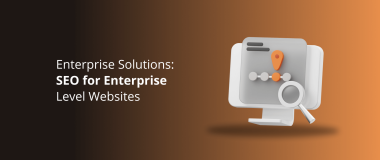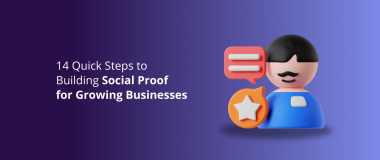Are you looking to build an enterprise website to take your business online?
Enterprises need global exposure to fulfill key requirements for availability, reliability, compatibility, scalability, performance, and security.
What better way to showcase your enterprise than by building a website?
WordPress is one of the most popular CMS for designing, developing, and creating a website. Thanks to default page builders like Gutenberg (now the WordPress block editor), creating a website from scratch is easy!
In today’s article, we will discuss the importance of a website for an enterprise and share some actionable tips for building one.
We will discuss the Gutenberg block editor and its ability to help you create a beautiful responsive website.
Then, we will talk about what’s necessary to create a website and the steps required to create one.
Let’s get started!
Why Is a Website Important for an Enterprise?
We can hardly find any successful enterprise that doesn’t have a website of its own.
Having a website is social proof that your business exists. It also creates a tremendous first impression, providing reassurance that you’re a real business.
Anything you can do to reassure visitors, answer their questions and showcase who you are and what you do is a good thing.
A website can help with that.
Actionable Tips for Building an Enterprise Website
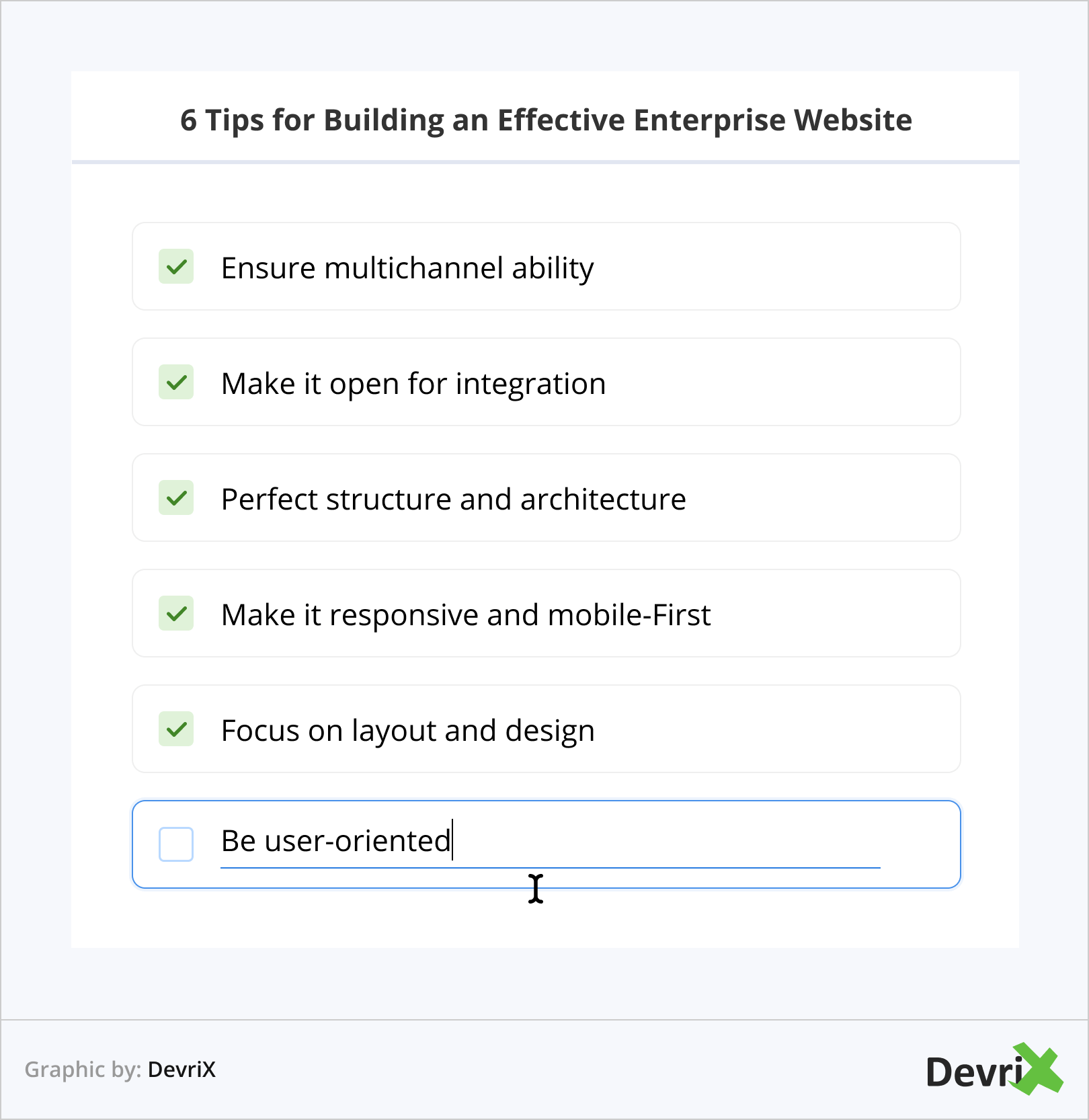
There are a few must-have features in an enterprise website.
Multichannel ability
Multichannel is a business strategy giving the customer experience to engage on the channel as they prefer.
For enterprise businesses, it is flexible to channel the website, marketplaces, and social media all in one place.
Creating a website with multichannel ability ensures each business is on its pace of better communication and efficient management. These media channels help you spread your marketing messages to your audience.
Open for Integration
Most enterprise business websites can handle integration. Yours should too.
It should be able to work with your CRM software, analytics platforms, online store and any relevant platform you use.
Structure and Architecture
Website structure and architecture refer to how the content will be presented on your website. They are necessary to organize their website successfully.
It can be a hierarchical, sequential, chronological, topic-based, matrix (sorting by date or topic), or audience-based.
Some websites will have a traditional hierarchical structure while others like news outlets may prefer topic-based or matrix structures.
Responsive and Mobile-First
With more than half of users using mobile devices for browsing the internet, a mobile responsive website is a must.
Responsive websites are designed and developed with mobile users in mind, offering a great user experience to the audience irrespective of their devices.
If you’re building an enterprise website, ensuring the platform and the theme you use can adapt to different screen sizes is essential.
Focus on Layout and Design
A good website design wins the first impression of your audience. , However, what keeps it winning is the ease of performing activities.
Visitors will use your site for many purposes, to find out about your enterprise or grab information, to research or to engage.
To do all these things, visitors will need to be able to quickly identify where the information is and how to access it. Which is where good design and a logical layout comes in.
User-oriented
Websites are about the user and not about you. Design for them, provide the information they need and the features they are looking for and it will be a success.
Keeping the user in mind throughout the design process is essential. After all, it’s them that will be using the site most often, not you!
What Do You Need to Build an Enterprise Website?
While the form and function of enterprise websites may differ, the elements you need to build the website are largely the same.
Here’s what you will need to build an enterprise website.
Domain and Hosting
Selecting the right domain and hosting improves the credibility of your website and helps you build brand value over time.
When selecting a domain name, we suggest a unique and memorable domain name that is related to your niche or includes your brand name.
We recommend keeping it short and straightforward. We also recommend sticking to popular extensions like .com, .org, .io, .net, and similar top level domains.
The domain you select might already be in use, so you must be ready with the alternatives.
For hosting, a good quality web host should offer 24/7 support, enterprise-level hosting plans, SSL certificates, large bandwidth, high storage capacity and enterprise-level security.
Here’s a list of managed WordPress hosting worth checking out.
WordPress

We suggest using a reliable platform like WordPress to create an enterprise website. While it is free, you’ll have to pay for the domain name and hosting service.
WordPress powers around 43.2% of the web, making it the most popular content management system in the world. It has thousands of themes and plugins to add any type of feature you might need.
It comes with the popular page builder Gutenberg, to help you quickly create a fully functioning website.
WordPress is ideal for enterprise businesses because the platform offers speed and security. It also allows you to build a responsive website from a huge library of themes, plugins, and third-party software.
WordPress Themes and Essential Plugins
A theme adds an attractive design you can use to help convert visitors and portray your business in a positive light.
Plugins are software add-ons that add or enhance existing features. For example, you can use a plugin to enable a smooth multi-channel ability feature or add an online store.
For an enterprise website, you can use plugins to add essential features like caching, security, email integration, CRM, and various other business-related functions.
When building a website using WordPress, the platform has its own Gutenberg page builder to help you customize, design, and develop your website. It can also work with third-party page builders too, like Spectra, Elementor, Brizy or Beaver Builder.
What Is the Gutenberg Block Editor?
Gutenberg, the default WordPress editor, was introduced in February 2019 with WordPress 5.0. It replaced the classic editor to make it easier for anyone to publish content and build pages.
It has a new user interface allowing you to add elements with drag-and-drop functionality. Each block can be customized individually, giving you more freedom in designing and building a page.

The previous editor was a basic text editor that required HTML and CSS knowledge to add elements like buttons.
Gutenberg uses blocks instead. It has hundreds of blocks, like buttons, images, and headings to select from.
It’s a much easier system to work with and requires little training to master.
Building an Enterprise Website Using Gutenberg
You can bring together WordPress themes and the Gutenberg block editor to create a powerful and responsive enterprise website.

Let’s discuss each step in detail.
Step 1: Select Web Hosting and a Domain
As mentioned earlier, we need a domain and web hosting to build a website. There are a number of domain and hosting services available so we recommend a little research before you commit.
Step 2: Install WordPress and Select a Theme
Many hosting providers provide WordPress installation in a few clicks.
If you go with SiteGround, installing WordPress is a few clicks away.
Once you’ve purchased hosting:
- Head to WordPress > Install and Manage from your SiteGround dashboard.
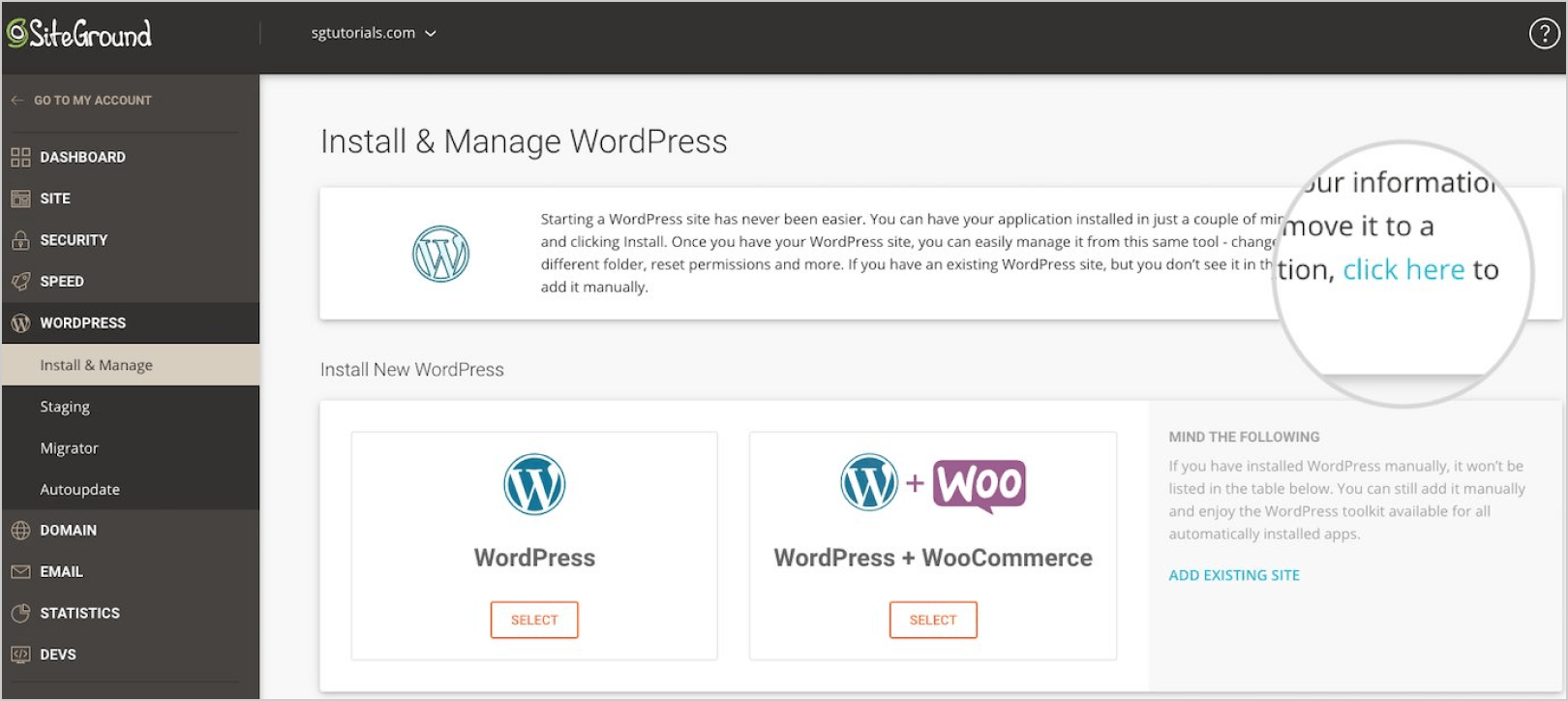
There are two different options available: WordPress and WordPress + WooCommerce.
Select the option you need.
If you’re building a website, choose WordPress. If you’re building a website with an online store attached, choose WordPress + WooCommerce.
The setup wizard will take care of everything for you. Just create your WordPress login credentials during the installation process and save them somewhere safe, as you’ll need them later.
Once the setup is complete, you can access it by adding a ‘/wp-admin’ to your domain.
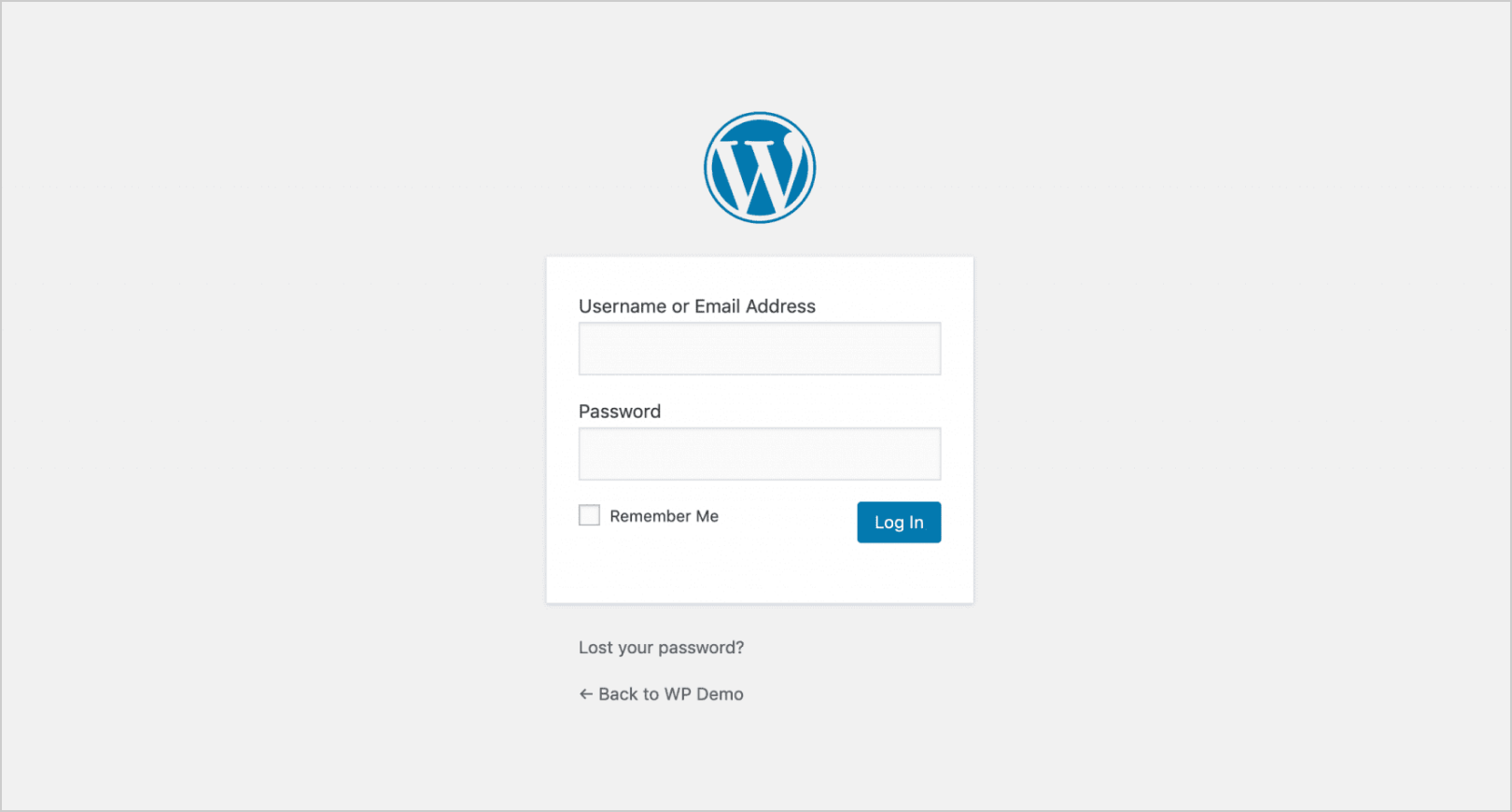
You can log in using the credentials you created a few moments ago.
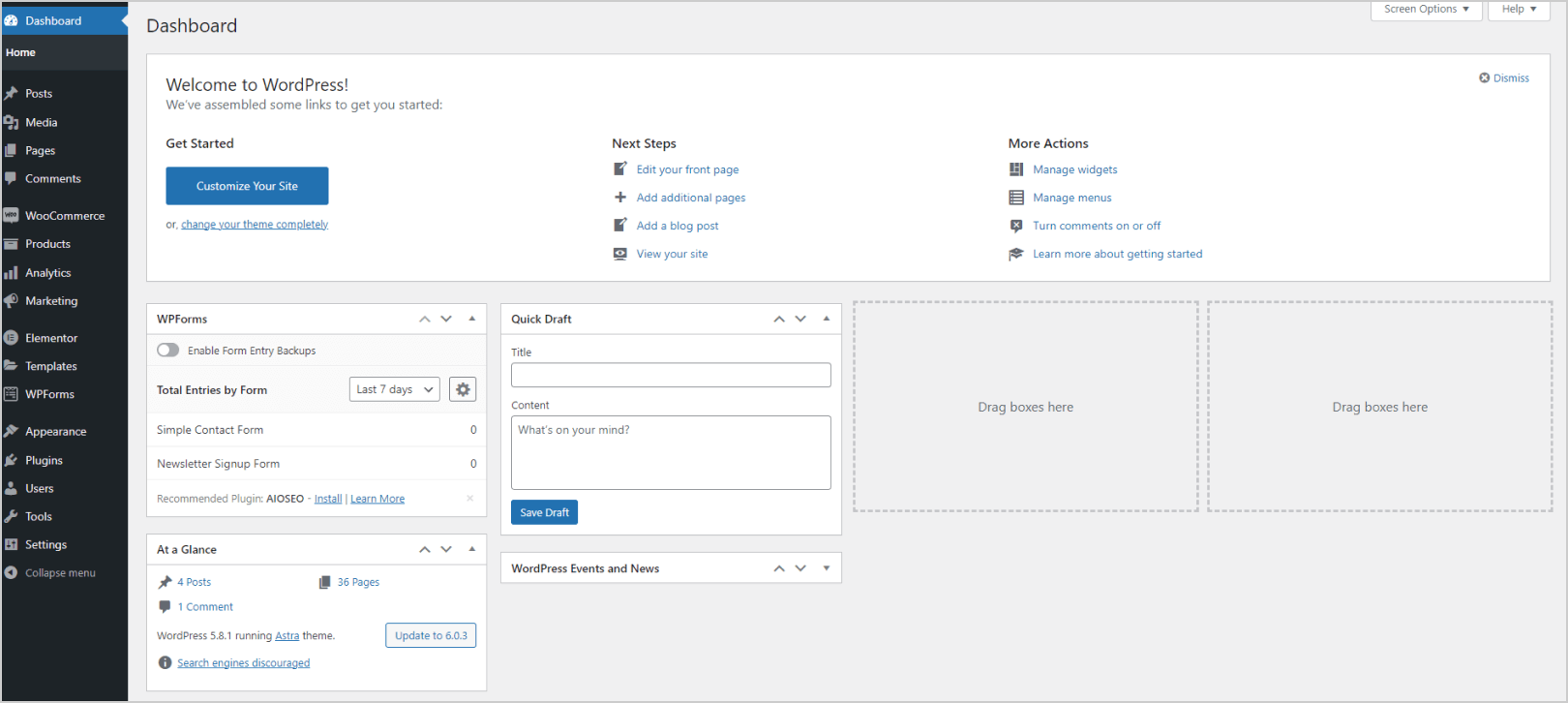
Now, it’s time to select a theme and install it.
To create an enterprise website, you’ll need a WordPress business theme.
Step 3: Activate the Theme and Essential Plugins
Once you decide upon the theme to use, you can install it into WordPress.
- Head to Appearance > Themes on your WordPress site dashboard.
- Enter the name of the theme into the search box at the top right.
Here, we’ll be using Astra.
Once the theme appears:
- Install and Activate the theme.
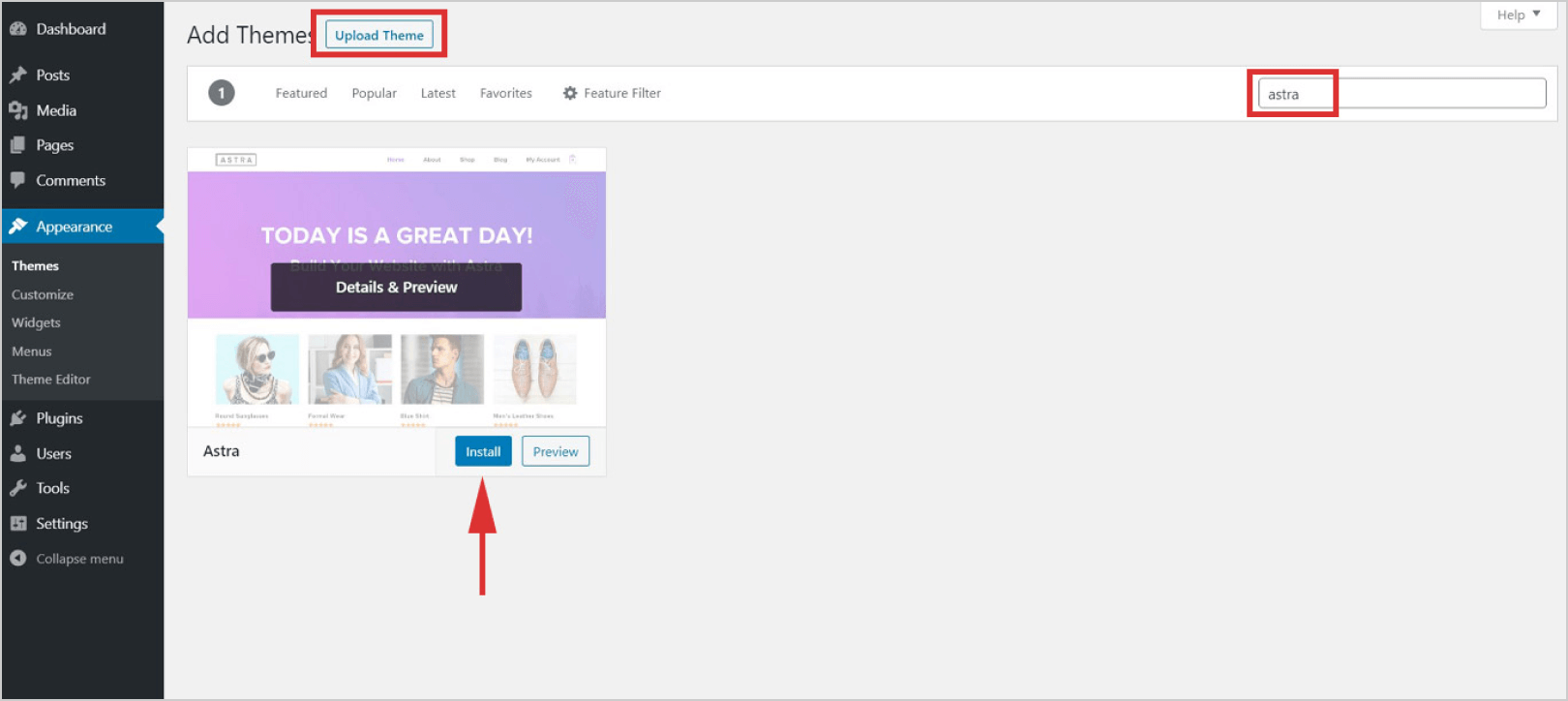
There are thousands of WordPress themes out there. We recommend spending a little time exploring them before you settle on any particular one.
You can install the plugin and select a wide range of business templates for enterprise websites.
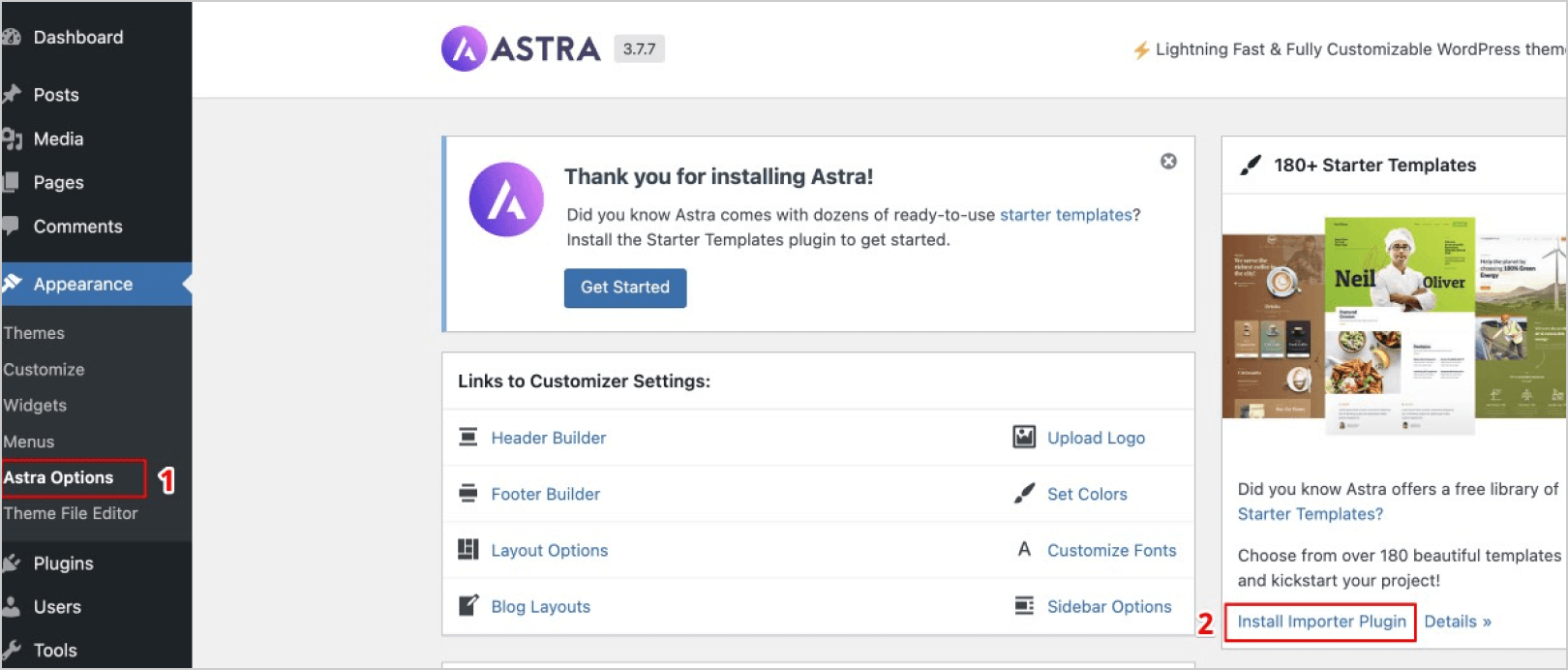
During the setup process, you’ll be asked to select a page builder you would like to use.
Select the Gutenberg page builder and then import the template.
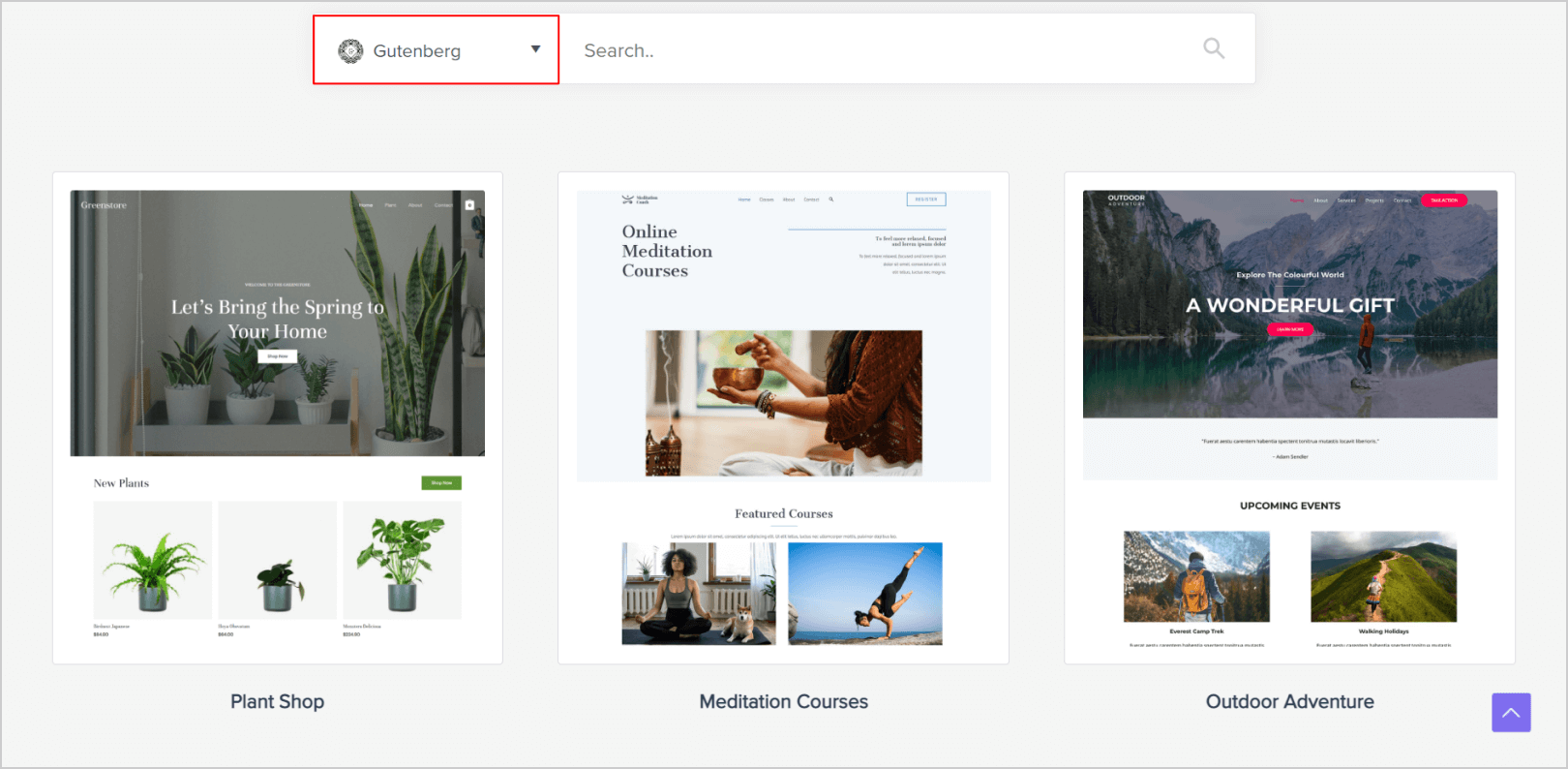
Now, your website has a domain, hosting, and theme to offer a visually appealing appearance, layout, and functionality.
A theme alone doesn’t ensure a great website. You’ll now need to add some plugins to add features like security.
You can select from a list of plugins for sales, SEO, security, management, and any purpose you like.
Once you decide upon the plugin to use on your enterprise website:
- From your WordPress dashboard, head to Plugins > Add New.
- Search for the plugin.

Once the plugin appears,
- Install and activate the plugin.
Step 4: Customize Your Website Design
Upon completing all these steps, your enterprise website is ready to customize to fit your needs.
You might want to edit, customize, add, and remove elements, features, images, content, and services on the website to make it match your brand.
To tweak the design of your website, you can use the default WordPress customizer. It offers easy customization with a live preview option to help you make changes as you prefer.
- Select Appearance > Customize.

Step 5: Adding Important Pages Using Gutenberg
With the Gutenberg page builder, adding pages and posts is easy.
Most WordPress themes have those pages pre-built for you to use. But, if you wish to create a new page and showcase any other information, you can do so.
- Head to Pages > Add New.

- Or you can edit the existing pages from all pages and select the edit option.

On the page, you can add any content like paragraphs, images, media, files, videos, links, or documents using Gutenberg blocks.
- Simply click on the + icon on the page editor.
![]()
Wrapping Up
There you have it, you’ve successfully built your enterprise website using Gutenberg.
We learned the importance of a website for enterprise businesses and some tips useful for creating a responsive site.
Also, we mentioned what is necessary to build an enterprise website and the exact steps to do so.
If you haven’t built a website before or have had a team to do it for you, it’s not that difficult. Follow these steps and you’ll be up and running in no time!
What do you think about this article? Have you created an enterprise website before? Do let us know your thoughts in the comment section below.


